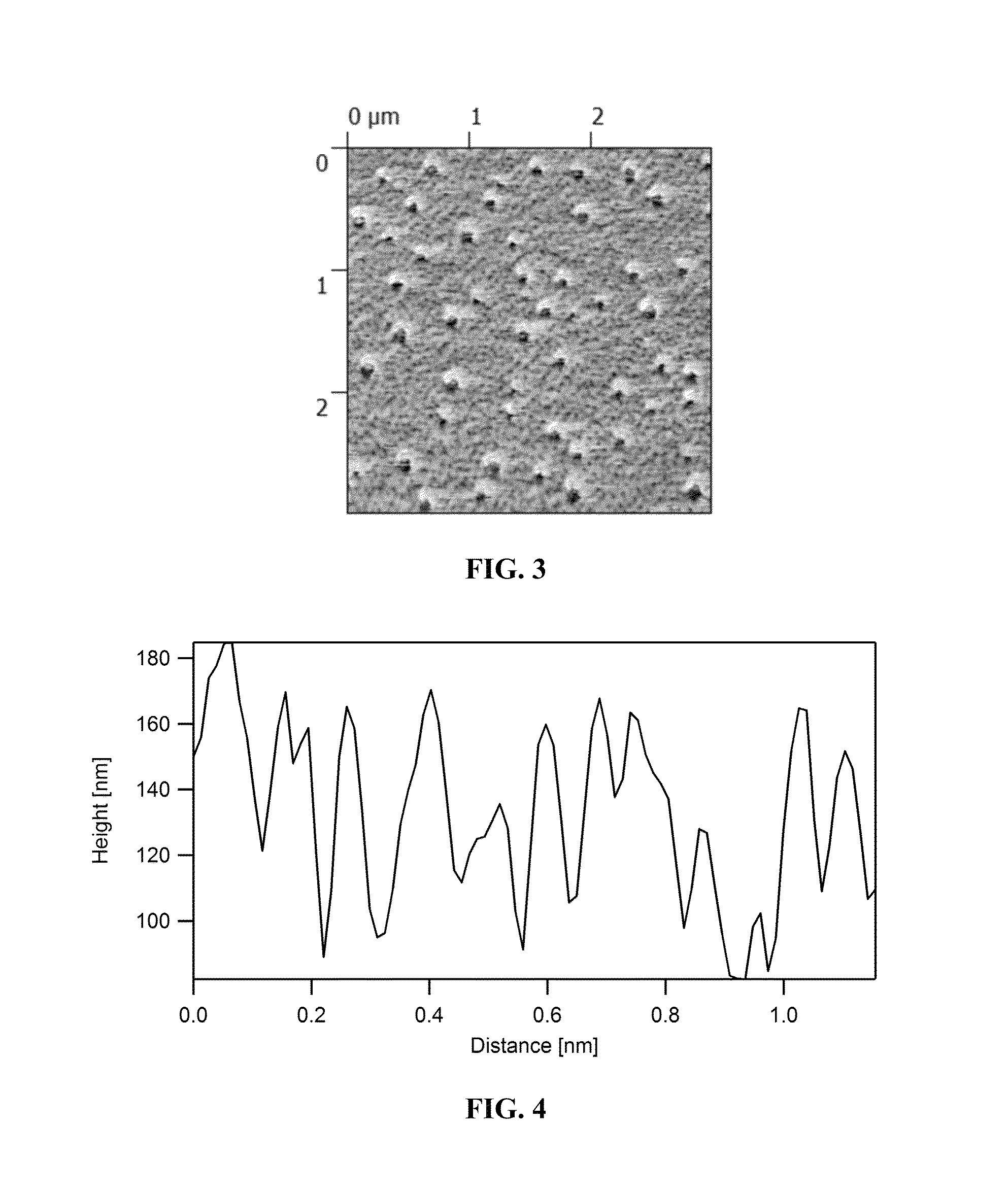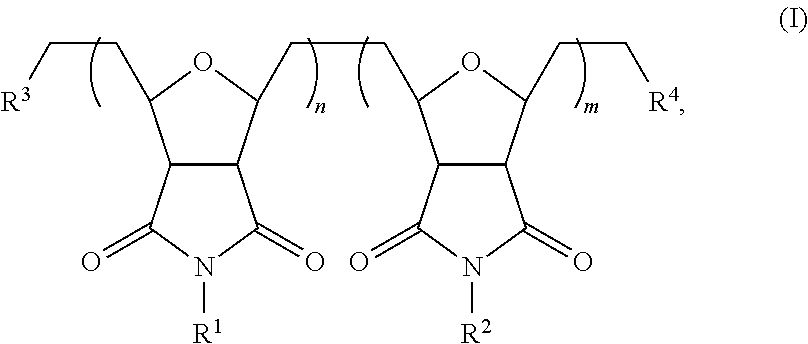Self-assembling polymers—IV
a self-assembling, polymer technology, applied in the direction of semi-permeable membranes, membrane technology, chemistry apparatus and processes, etc., can solve the problem of not obtaining well defined nanostructures
- Summary
- Abstract
- Description
- Claims
- Application Information
AI Technical Summary
Benefits of technology
Problems solved by technology
Method used
Image
Examples
example 1
[0114]This example provides the materials used in the preparation of the monomers and polymers.
[0115]Maleimide, furan, diisopropylazodicarboxylate (DIAD), triphenylphosphine (Ph3P), 1-haxadecanol, tetrahydrofuran (THF), ethyl acetate, N-phenylmaleimide, acetonitrile, methanol, Grubbs second generation catalyst, 3-bromopyridine, and pentane were obtained from Sigma-Aldrich Co. and used without further treatment. Dichloropentane, also obtained from Sigma-Aldrich Co., was treated with basic alumina before use.
example 2
[0116]This example illustrates the preparation of exo-7-oxanorbornene-5,6-dicarboxyimide (Cl), an intermediate in the preparation of the first and second monomers in accordance with an embodiment of the invention.
[0117]In a clean 500 mL round bottom flask (RBF) equipped with magnetic stirring bar, furan (21.0 g, 309 mmol) was added to a solution of maleimide (25 g, 258 mmol) in 250 mL of ethyl acetate. The mixture was heated at 90° C. for 30 h. Cl was obtained as white precipitate from solution upon washing with ether (100 mL, 3×) and filtration. The white solid was dried under vacuum at room temperature for 24 h. Cl was obtained as a pure exo-isomer in yield of 29 g, 68%. 1H-NMR (300 MHz, CDCl3): δ (ppm) 8.09 (s, 1H), 6.53 (s, 2H), 5.32 (s, 2H), 2.89 (s, 2H).
example 3
[0118]This example illustrates the preparation of dichloro[1,3-bis(2,4,6-trimethylphenyl)-2-imidazolidinylidene](benzylidene)bis(3-bromopyridine)ruthenium(II) (G3) catalyst.
[0119]The second generation Grubbs catalyst (G2) illustrated above (1.0 g, 1.18 mmol) was mixed with 3-bromopyridine (1.14 mL, 11.8 mmol) in 50 mL flask. Upon stirring at room temperature for 5 min, the red mixture turned into bright green. Pentane (40 mL) was added with stirring for 15 minutes and green solid was obtained. The mixture was cooled in the freezer for 24 h and filtered under vacuum. The resulting G3 catalyst, a green solid, was washed with cold pentane and dried under vacuum at room temperature to give a yield of 0.9 g, 88% yield.
PUM
| Property | Measurement | Unit |
|---|---|---|
| Structure | aaaaa | aaaaa |
| Morphology | aaaaa | aaaaa |
Abstract
Description
Claims
Application Information
 Login to View More
Login to View More - R&D
- Intellectual Property
- Life Sciences
- Materials
- Tech Scout
- Unparalleled Data Quality
- Higher Quality Content
- 60% Fewer Hallucinations
Browse by: Latest US Patents, China's latest patents, Technical Efficacy Thesaurus, Application Domain, Technology Topic, Popular Technical Reports.
© 2025 PatSnap. All rights reserved.Legal|Privacy policy|Modern Slavery Act Transparency Statement|Sitemap|About US| Contact US: help@patsnap.com



